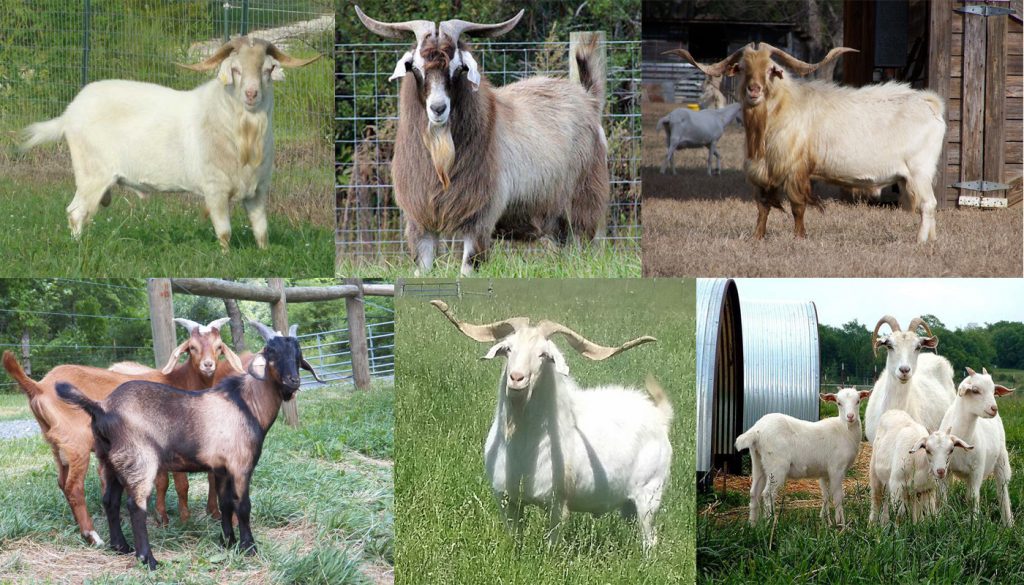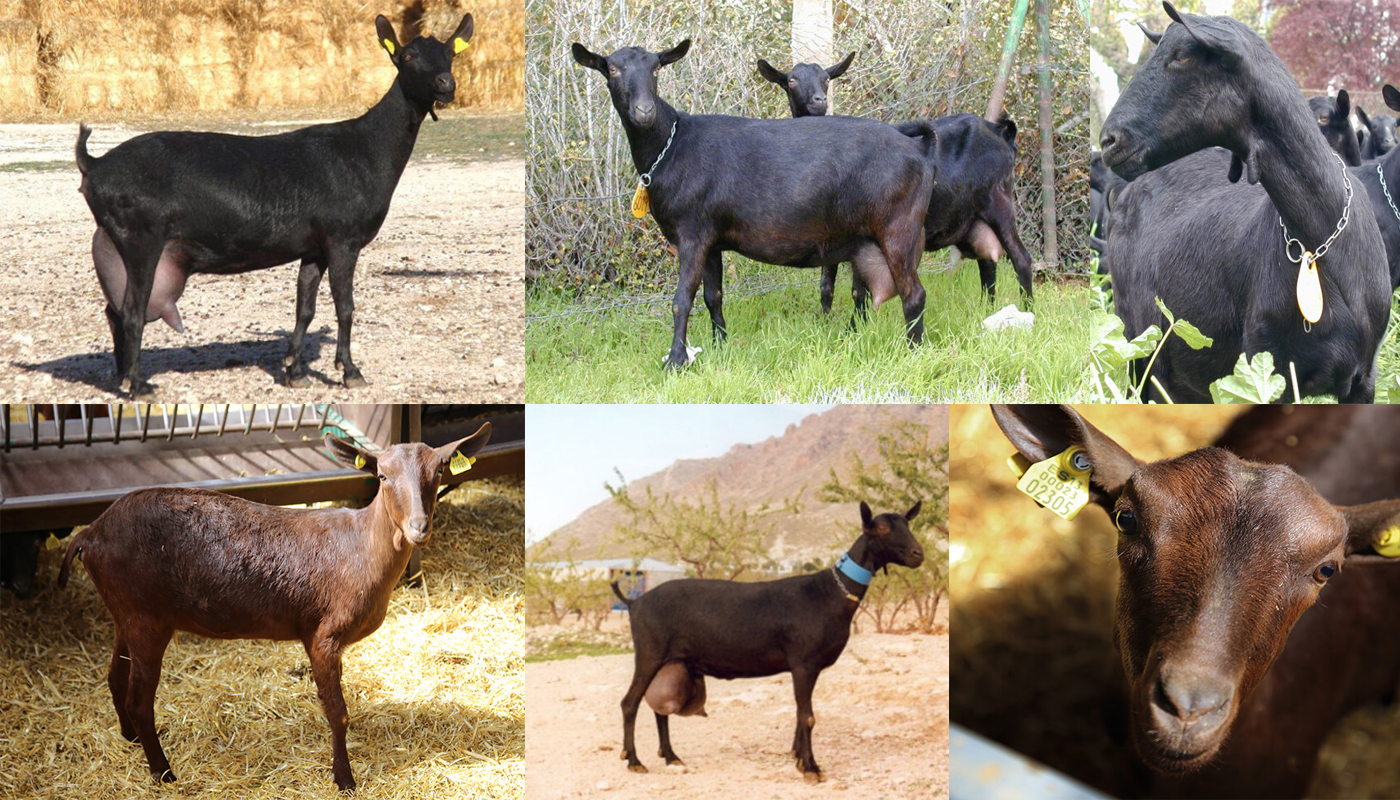
The Kiko goat is a graceful and agile goat that grows fast, breeds well and is almost completely self-sufficient. They know how to take care of themselves and their kids under the roughest of environmental conditions. They have a great meat yield for goat meat and are resistant to parasites!
These beautiful goats make a great addition to any goat herd and are one of the toughest breeds. A good starter goat for the new goat owner with enough space for grazing and a barn/stall to house them comfortably in.
Kiko Goat Quick Profile Overview
| A beautiful goat that comes from New Zealand | |
| Country of Origin: | New Zealand |
| Other Names: | None |
| Breed Size: | Large |
| You may Also Like: | Top 12 Large to Largest Goat Breeds |
| You may Also Like: | 11 Smaller and Miniature Goat Breeds |
| Main Purpose: | Meat production |
| Can be used for | Breeding, Meat, Pet |
| You may Also Like: | 10 Best Goat Breeds for Meat Production |
| Temperament: | They are bold and vivacious. |
| Good with Kids? | Children should be supervised at all times around animals especially goats that are large sized breeds that have horns. |
| You may Also Like: | 10 Best Goat Breeds to Keep as Pet |
| Ideal Environment: | They need a large space to roam, forage and graze on fresh green grass and trees. | Ideal Climate: | They are quite climate adaptable and hardy |
| Conservation Status: |
Not Listed by the *ALC They are rare in some areas |
| Health Issues? | They do not have any known health issues and are less prone to getting internal parasites. They also do not need hoof trimming as much as other goat breeds due to the structure of their hoof. |
| Good Starter Goat? | Yes, if a first-time goat owner has space and grazing land. The Kiko can make a good starter goat. They can be a bit bossy and challenging in that if they do not want to do something they simply won’t. |
| Goat Associations: | American Kiko Association and the International Kiko Goat Association |
| Goat Clubs: | Try the American Kiko Association or the National Kiko Registry for breeder’s club. These associations will most likely have up to date records of breeders. |
| Note: *ALC stands for American Livestock Conservancy | |
PHYSICAL CHARACTERISTICS
| Although not by much the does are lighter and nimbler with softer features than the bucks. The buck is a bit bigger than the doe. They are also a bit more stubborn and tend to have very big personalities. |
||
| Color(s): | White but there are a host of other different colors The male and female share the same color traits. |
|
| Goat⇒ | Doe | buck |
| Breed Weight: | 180 lbs. | 260 lbs. |
| Breed Height: | 28 inches at withers | 30.5 inches at withers |
| Hair: | Short to medium soft glossy goats that can produce cashmere, mohair and the skin if fine for leather | They have short to medium length hair. Their coat is glossy some have a ridge of hair along their spine |
| Ears: | Stand outwards and erect | Their ears are erect from their head |
| Horns: | Long sweeping horns with a slight twist | They are longer horned than the doe and they sweep outwards from their forehead |
| Matures at age: | 5 to 15 months | 3 to 15 months |
| Puberty Age: | 4 to 10 months | 4 to 9 months |
| Breeding Age: | 18 months | 1 year |
| Breeding Traits: | 1 Breeding cycle | Cover 20 to 30 does in 1 season |
DOE BREEDING & MILKING INFORMATION
| The does a prolific breeder with an extended breeding period They do not need help when kidding |
|
| Breeding Period/cycle: | Usually lasts 12 to 36 hours Ave. 21 days/18 to 24 days |
| Gestation Period: | Usually around 148 to 155 day but most are 150 days |
| Kids: | The kids are alert and get going rather fast after birth. They can have twins or up to four kids in one birthing |
| Good Mothers? | They are extremely maternal and protective over their kids |
| Lactation Period: | 5-6 months |
| Milk Quality: | Not the top dairy goat but the milk quality is still good |
| Milking Level: | They were not bred for milking although their milk is nice and sweet |
| You may Also Like: | Top 10 Best Dairy Goat Breeds |
GOOD TO KNOW
| Some good to know information about the Kiko goat breed | |
| Where to buy them: | Kopf Canyon Ranch, Lookout Point Ranch, BF Farm Kiko Goats, Zink Ranch. It is best to contact the organizations such as the American Kiko Goat Association, National Kiko Registry or even the American Goat Federation. These organizations will be able to help with an updated list of breeders in and around your area... |
| Predators: | Even though they are quite a large breed they can still be attacked by wild dogs, the young by foxes or other cats such as mountain lion, etc. It is always best to check with your local animal authorities on the various known predators in your area that could be a possible threat to your goats. |
| Agility: | They are quite agile and nimble. They love to climb and try to squeeze through fencing that is to small for them to fit through. |
| Interact with other animals: | They do not mind other animals although the bucks can be a bit pushy and arrogant. |
GENERAL INFORMATION:
The Kiko goat was originally selected to be able to withstand the harshest environments. They can graze on nearly anything and their energy is efficiently converted to meat. As they can eat nearly anything in a grazing pasture or adapt to the food to hand they can survive in the most adverse of conditions.
The young grow faster than almost any other goat breed. This is due to the does high-quality milk.
The kids are born quite alert with a lot of vigor. Their weaning weights are quite high, and they have a very strong survival instinct.
The mothers will birth and raise her kids to wean without any assistance.
A crossbreed of a Kiko goat and a Boer goat is called a Boki Goat.
They have a fine supple skin for leather production, but they are not really used for leather production
They are primarily raised as a meat goat. Their meat is not as expensive as Boer Goat, but it is still of excellent quality.
They usually crossbreed the Kiko and Boer goat.
HISTORY
As they are excellent in rough country conditions the Kiko goat is great for low-input farming.
With a survival instinct unlike any other goat breed, they are a very popular meat breed for both the local farmer and commercial meat producer. Especially as they have a very rapid growth rate.
The bucks also have a longer breeding period which makes then ideal for producing strong offspring.
These beautiful goats were originally developed in New Zealand in the early 1970’s. The first breeders of the goat were said to be Anne and Garrick Batten. The cross-bred local feral New-Zealand goats with imported goats such as the Saanen, Toggenburg and Anglo-Nubian.
Thereafter a group of New Zealand ranchers got together and collected thousands of feral goats. The also formed “The Goatex Group LLC” with a mission to breed these feral goats. From this breeding only, the animals with the most meat, those that matured the fastest and those that were parasite and disease resistant were kept. The rest were slaughtered whilst those that were picked were left to survive on their own. The herds did not receive any special shelter, vet care, hoof trimming, kidding assistance or any supplementary feed. The goats had to fend for themselves leaving only the strongest and fittest to survive.
The Kiko goat was first imported to the United States in the 1990’s and soon had widespread interest due to the goat’s unique survival characteristics.
It has been noted that some of the fastest growing and best producing meat goats in the world are those of the Kiko/Boer cross. The Goatex Group found that the kids of this cross reached their maturity rate a lot faster than either of the full-blooded breeds kids did.
VIDEO
USEFUL LINKS
- American Goat Society(AGS)
- American Goat Federation (AGF)
- American Dairy Goat Association (ADGA)
- American Cashmere Goat Association (ACGA)
- Canadian Meat Goat Association (CMGA)
- Canadian Goat Society (CGS)
- Animal Shelter (ASPCA)
- American Veterinary Medical Association
- American Poultry Association
- American Animal Welfare Society
- American Animal Control
- American Animal Husbandry Society
 Toggenburg Goat Breed – Everything You Need to Know
Toggenburg Goat Breed – Everything You Need to Know Top 10 Best Dairy Goat Breeds
Top 10 Best Dairy Goat Breeds Appenzell Goat Breed – Everything You Need to Know
Appenzell Goat Breed – Everything You Need to Know Discover 8 Unusual Goat Breeds From Around the World | Unique Characteristics & Cultural Significance
Discover 8 Unusual Goat Breeds From Around the World | Unique Characteristics & Cultural Significance Managing Hoof Health in Goat Breeds: Tips for Preventing Lameness
Managing Hoof Health in Goat Breeds: Tips for Preventing Lameness Booted Goat Breed – Everything You Need to Know
Booted Goat Breed – Everything You Need to Know Nigerian Dwarf Goat Breed – Everything You Need to Know
Nigerian Dwarf Goat Breed – Everything You Need to Know 10 Best Goat Breeds for Meat Production
10 Best Goat Breeds for Meat Production Choosing the Perfect Goat Breed for Your Homestead: A Comprehensive Guide
Choosing the Perfect Goat Breed for Your Homestead: A Comprehensive Guide Murcia Granada Goat Breed – Everything You Need to Know
Murcia Granada Goat Breed – Everything You Need to Know Russian White Goat Breed – Everything You Need to Know
Russian White Goat Breed – Everything You Need to Know